Let's take a look at a particularly charming plant that flowers either in autumn or winter: the cyclamen. If you're wondering when the best time is to plant these wonders and the right method to ensure their flourishing, you're in the right place. In this tutorial, we will explore together the key steps to successfully plant your cyclamens. Get your tools ready, and let's get started without further ado!
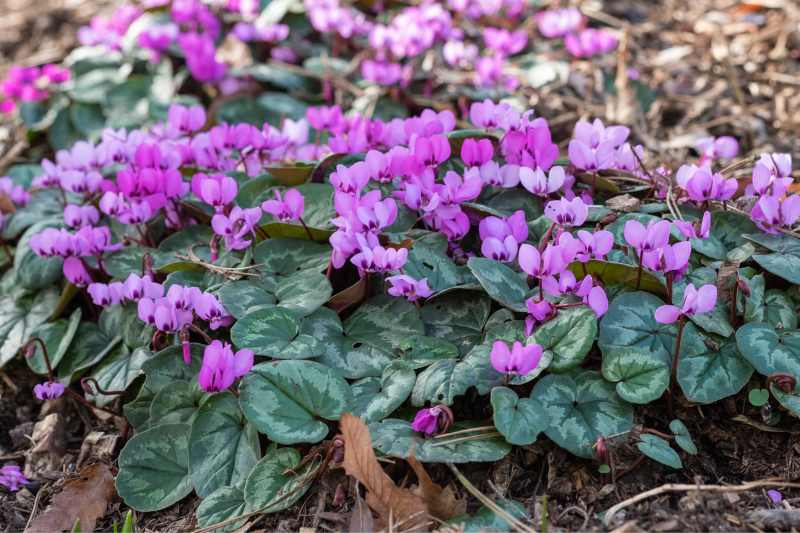
A few words about cyclamens
The cyclamen is a beautiful flower, from the Primulaceae family, that blooms in autumn (Naples cyclamen) or in winter (Cyclamen coum), prized for its beauty and the variety of its colours, ranging from white to violet, including pink. The foliage of this small ground cover can also be decorative, sometimes displaying small grey-silver patterns: it disappears in summer but remains present in winter. Together, they form a charming and colourful carpet for many months, especially if care is taken to plant different species with staggered flowering times. Cyclamen planting can be done in pots or in the ground, but always in partial shade, or even in the shade at the foot of trees, in a woodland setting.
To enjoy these beautiful flowers, it is essential to choose well-drained soil and respect a certain planting depth. Watering cyclamen should be moderate, avoiding excess water that could rot the bulb. In fact, these delicate little flowers seem to withstand dry soils well as they are accustomed to competing with large trees in their natural habitats.
Did you know?: Cyclamens are often classified among bulbous plants. However, they are tuberous perennials. Each cyclamen tuber will produce several small flowers.
There are many species and varieties of cyclamens. Discover them in our online nursery.
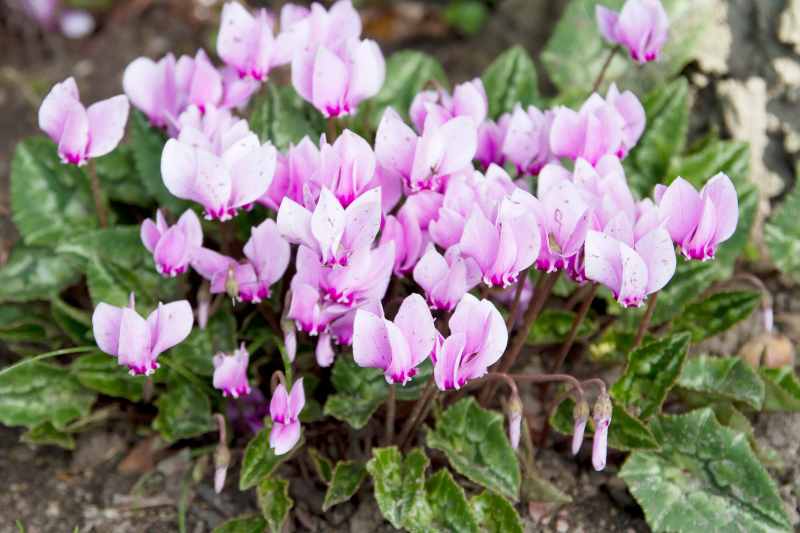
The best time to plant cyclamens
Outdoors (in the ground or in pots), the best time to plant cyclamens will primarily depend on the type of cyclamen: particularly between autumn-flowering cyclamens (Cyclamen hederifolium or Naples cyclamen and Cyclamen cilicium) and winter-flowering cyclamens (Cyclamen coum and Cyclamen pseudibericum).
- Autumn-flowering cyclamens (between August and November): these cyclamens should be planted in summer, either in July or August.
- Winter-flowering cyclamens (between December and March): these cyclamens should be planted in autumn, either from September to October.
If you plan to plant cyclamens in pots for indoor use, they can be planted at any time of the year, provided they are kept in appropriate conditions indoors (see planting section).
How to plant cyclamen bulbs?
Planting in the ground
Cyclamens prefer a partially shaded spot, sheltered from direct sunlight, especially during the hottest hours. They also appreciate a location protected from strong winds. The soil must be well-drained to prevent the bulbs from rotting. If your soil is heavy or clayey, add compost to improve drainage. The ideal soil pH for cyclamens is slightly acidic.
- Dig a hole about 5 to 7 cm deep.
- Place the bulb (or tuber) with the pointed end facing up. If you cannot distinguish the top from the bottom, place it on its side; it will find its way to the surface.
- Cover the bulb with soil without compacting it too much.
- Space each bulb about 15 to 20 cm apart to give them enough room to grow.
- Water lightly after planting. Afterwards, water moderately, ensuring the soil does not remain waterlogged. Cyclamens do not like excess water.
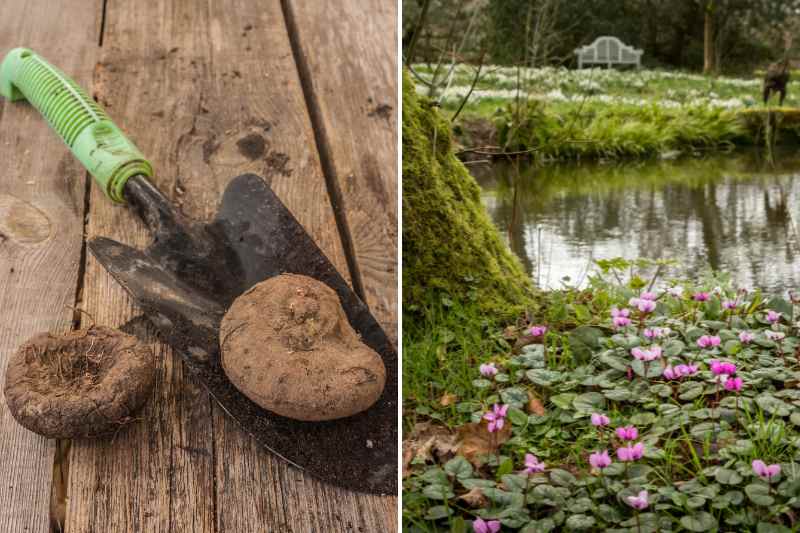
Planting in pots or containers
Choose a terracotta pot with drainage holes to prevent water stagnation. The size of the pot or container will depend on the number of bulbs you wish to plant, but ensure there is enough space for root growth. Generally, for a pot with a single tuber: choose a pot with a diameter of 15 cm and a minimum depth of about 10 cm. Place a layer of clay balls or gravel at the bottom of the pot to improve drainage.
- Fill the pot with good quality potting soil up to about halfway.
- Place the bulbs (or tubers) with the pointed end facing up, spacing them about 10 cm apart.
- Cover the bulbs with potting soil, leaving the top of the bulb slightly exposed or just at the surface level.
- Water moderately after planting. Ensure that the water drains well and that the soil is not waterlogged.
- Place the pot in a partially shaded spot outdoors.
- Afterwards, when the leaves and flowers start to appear, you can apply a liquid fertiliser for flowering plants once a month to encourage blooming. Reduce watering once the flowers begin to fade to allow the plant to enter dormancy.
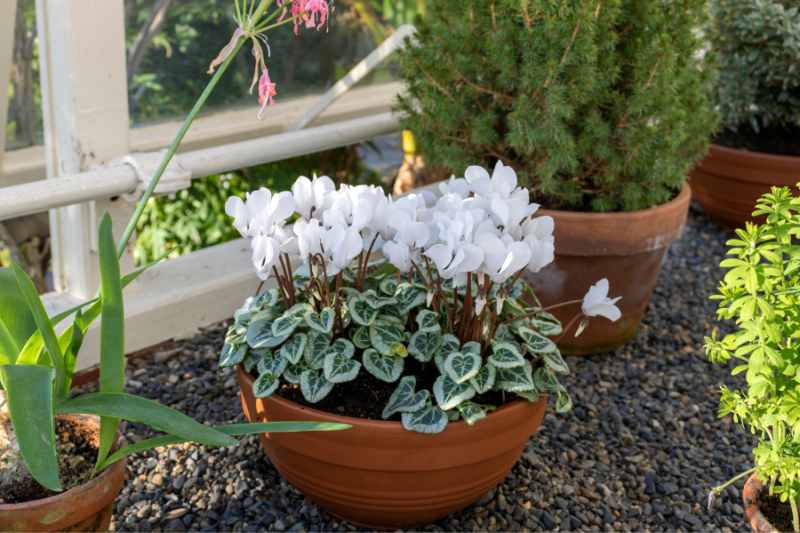
The special case of indoor cyclamens: these are more sensitive than other cyclamens (like the Cyclamen persicum, which suffers at temperatures below -4°C), and are planted in the same way as those grown outdoors in pots. The differences will be felt in the care. Indoor cyclamens prefer cool temperatures, ideally between 10°C and 18°C, and a location near a window receiving indirect light. Cyclamens appreciate high humidity, which can be maintained indoors by placing the pot on a saucer filled with clay balls and water. Finally, here too, after flowering, watering will be reduced to allow the plant to enter dormancy and lose its leaves.
Necessary materials
- Small trowel or transplanter
- Quality potting soil: If you are planting in pots or wish to improve the quality of the soil in the ground.
- Pot with drainage holes: If you are planting in pots.
- Clay balls or gravel: To improve drainage at the bottom of the pot and, for indoor cyclamens, to increase humidity around the plant.
- Watering can
- Liquid fertiliser for flowering plants
- Mulch or compost: To protect bulbs in the ground from extreme temperatures and to nourish the soil.
- Gardening gloves
- Garden labels (optional): If you are planting different varieties of cyclamens, labels can help you identify them.































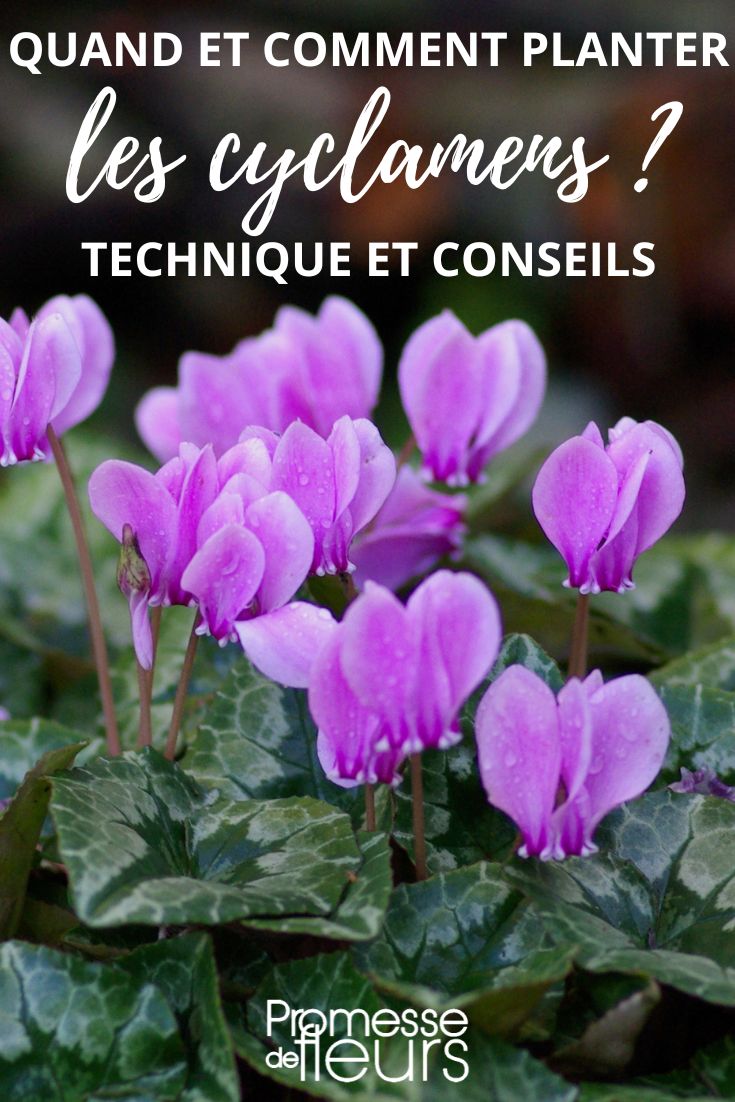
Comments